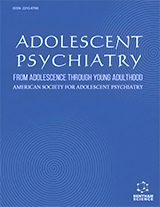Abstract
The treatment of the Trypanosoma cruzi infection with anti-trypanosome drugs did not interrupt the progression of the cardiac lesion in rabbits and in humans. Then, the question arose: what would sustain the active lesion in the chagasic heart? A hypothesis of horizontal transference of DNA from T. cruzi to the genome of the host was proposed because it could answer this question. The investigation showed that minicircle sequences from the parasite are transferred into specific sites of the rabbit genome and, also, of the primate genome and a main hotspot of integration was the retrotransposon LINE-1. Using a model of in vitro infection it was possible to demonstrate that the kDNA integrated to the LINE-1 could be mobilized to other genome site within the host cell. This demonstration suggested that the mutation-induced modification in the genotype and in the phenotype of the target cell, which may accumulate along the cryptic chronic infection, might explain the variability of clinic manifestations of the human disease as well as the origin and progression of the rejection of the non-parasitized cell over time. This explanation justifies the long period between the initial infection and the triggering of the disease. According to this theory, the parasite acts as a mutation vector and the altered cells are recognized as not-self and are rejected by the immune defense system.






















